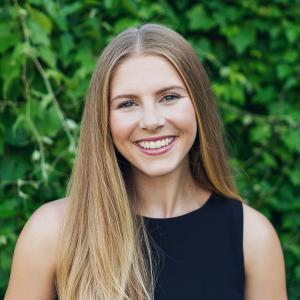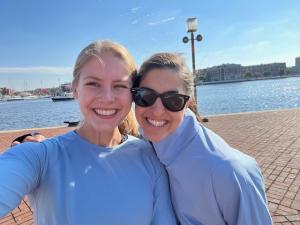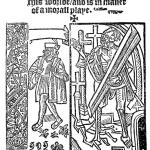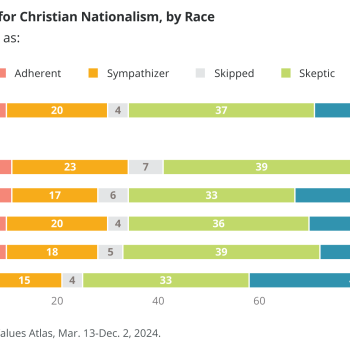Faithful Learning in Different Institutional Contexts: A Conversation with Allie Roberts Lopez
We have been having conversations within the Anxious Bench–conversations that will hopefully continue at the Conference on Faith and History in October–about doing religious history in various educational settings. How does teaching American religions change (or not) at a private college vs. a confessional college/seminary vs. a public university? What about personal affiliation/creedal/behavioral standards?
Today I’m talking through some of these issues with Allie Lopez, a graduate student in history at Baylor University.
Allie, you and I met at a public-regional comprehensive university. How did you think about the relationship between faith and scholarship (if at all!) when you decided to attend UNA?
As a public school graduate, I did not consider the relationship between faith and scholarship when I entered college. I was also grappling with my faith when I started at UNA, so I was not sure how an intellectual life and commitment to faith could coincide. What did it mean to pursue the life of the mind and adhere to Christianity—and what kind of Christianity? I really wasn’t sure. Though I still found certain Christian principles and a Christian ethic compelling—love your neighbor, care for the least of these—at the time, I did not know how they would apply to scholarship.
How did that change? Did you learn about religion/Christianity in your classes at UNA? What was your religious life like in a public college?
In history classes, I remember learning about the role of Christianity in slavery, abolition, and the Civil War. You lent me Mark Noll’s The Civil War as a Theological Crisis, which I read during my freshman winter break. I also learned about the influence of Mahatma Gandhi’s satyagraha and ahimsa on nonviolence in the US civil rights movement as well as how civil rights activists lived out their theological convictions. I remember being struck when I learned that civil rights activists like John Lewis literally prayed for those who persecuted them during sit-ins, kneel-ins, and other demonstrations. And during an independent study on Black women’s activism my senior year, I read how faith influenced women’s actions. For instance, I learned about Fannie Lou Hamer’s faith, which as Charles Marsh writes, motivated her to leave the cotton fields of Mississippi to “work for Jesus” in civil rights.
I also took a History of Christianity course my senior year, and most of the readings were from the Old and New Testaments and an accompanying textbook. That course provided an opportunity to engage the Bible with historical questions. Since I also majored in English, my literature courses often considered religious themes in novels and other texts. Books like Toni Morrison’s The Bluest Eye and texts like W.E.B. Du Bois’s “A Litany of Atlanta” invited questions about God, suffering, and the roles of Christianity in the United States.
Though a public college, many students, faculty, and administrators at UNA (located in Florence, Alabama) were Christians, but some were not. During my time at UNA, I met students and faculty who came from different faith backgrounds as well as those who were agnostic or atheist. Still, it was quite common for students to be involved in different Christian campus ministries, like Campus Outreach, the Baptist Campus Ministries, among others, and for those campus ministries to host events on campus.
Yes, for a public institution, both faculty and students tend to be quite open about their faith practices, though it’s not uncomplicated. Do you remember how you found out I was a Christian?
Though I do not remember a specific moment, I thought you were a Christian by how you treated your students. Your generous spirit and comforting presence were clear to me and to others. When I felt overwhelmed by collegiate expectations and unsure of my career path, I visited you during office hours. You encouraged me to consider my vocation thoughtfully and faithfully and gave me hope.
You also encouraged me to read Howard Thurman’s Jesus and the Disinherited and gave me a copy (that I still have—sorry!
Ah ha! So that’s where it is. Glad for you to keep it!
That book changed my life and shaped my faith. Thurman writes, “The masses of men live with their backs constantly against the wall. They are the poor, the disinherited, the dispossessed. What does our religion say to them?” His questions and exhortations continue to influence how I think about, as he would call it, the religion of Jesus Christ.
That’s so sweet, Allie. And though I have my doubts, I’m glad that’s how you remember it! How did you make the decision to go to a religious institution for graduate school? What figured in to that decision?
Baylor is one of the few graduate schools that conducts interviews prior to accepting students. When I visited Baylor for interview weekend, the faculty and graduate students were warm and welcoming. Graduate school can feel competitive, but that weekend, I sensed a collegiality and generosity that I appreciated. I was also interested in taking various religious history courses that the department offered, and by that time, I wanted to have conversations with other Christians about how faith influences scholarship and teaching.
I was also accepted and received funding, both of which played a bigger role in this decision!
What have been the differences between UNA and Baylor? What would you say the differences are between those types of schools?
Since Baylor defines itself as Judeo-Christian, students know their professors adhere to Jewish or Christian faith. At a university like Baylor, faculty and administration seem to speak more openly about their faith inside and outside of the classroom. This can manifest in a myriad of ways, including praying for students or opening courses by explaining to students how one’s faith informs what and how they teach. Additionally, all undergraduates at Baylor are required to take Christian Heritage and Christian Scriptures, which would not be required courses at a public institution like UNA.
How has Baylor fostered your love of history and your faith? How is American religion discussed in the classroom and culture?
At Baylor, I have had more opportunities to interrogate the relationship between faith and learning inside and outside of the history department. Recently, I finished a program at Baylor called Conyers Scholars. Conyers Scholars brings Christian students across disciplines together to consider vocation, the academy, and how faith informs scholarship and teaching. Once a month, we gathered for a meal, discussed readings, and met with faculty who provided insights about their experiences as Christians in a university setting.
My graduate courses provided opportunities to discuss American religion in new ways. I took multiple courses, including Early American Religion and American Women & Religion, among others. These courses expanded my understanding of religion and Christianity in the United States. Books like Ula Y. Taylor’s The Promise of Patriarchy, Bethany Moreton’s To Serve God and Wal-Mart, Marcus Rediker’s The Fearless Benjamin Lay, and Emily Suzanne Johnson’s This is Our Message were just a few of the readings that led to enriching class discussions. And books like Kristen Kobes du Mez’s Jesus and John Wayne led to some graduate students’ reflections on faith that bridged the personal and historical. At Baylor, graduate students are invested in learning how religious faith informs the past and present.
But the history department at Baylor also invites students to ask historical questions that are not religious, too. After all, a Christian academic does not have to study Christianity. Many do not. As my own research has diverged from questions about religion, Baylor professors continue to encourage my curiosity, and as for all students no matter the topic, they encourage intellectual rigor.
That’s wonderful. It does seem though that most students study religious themes in their research and many Baylor graduate students go on to teach in religious institutions or Bible colleges as well as secular R1s. How have you thought about institutions you might want to teach in?
Teaching anywhere would be a gift. Whether at a public, private, and/or religious institution, I feel that Christian scholars can play an important role.
At the beginning of this semester, which was my first one teaching, I read “Reflections on the Right Use of School Studies with a View to the Love of God” by Simone Weil, written in 1942. Weil explains that cultivating attention in the classroom helps us learn how to pray and be in communion with God. Attention also helps us “acquire the virtue of humility, and this is a far more precious treasure than all academic progress.” No matter what institution I am at, I hope to take up Weil’s invocation to pay attention and to cultivate student attention. As she writes, the ability to attend to our work, to ourselves, and to others is a miracle. If done well, I agree that teachers, no matter where they are, can make “[every] school exercise…like a sacrament.”
Oh, I love that. Cultivating attention as a form of humility: I can hardly think of anything more countercultural in our moment. A powerful reminder. Thanks Allie! And thanks for thinking through some of these institutional and theoretical questions with me. You’re the best.















